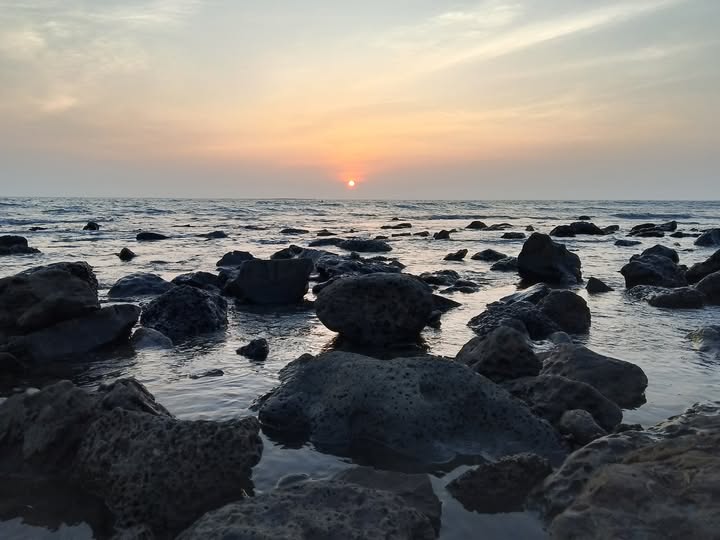During her tenure as prime minister, Sheikh Hasina had said many times that there were foreign conspiracies surrounding Bangladesh, including Saint Martin’s Island.
She could have remained in power for life if she had allowed the West to set up military bases in the Bay of Bengal, signed military agreements, supported the Arakan Army in Rakhine, and given Western powers access to strategic locations like Chittagong port, as demanded by the West.
Recently, she accused West’s puppet, Muhammad Yunus, of “selling” the nation to the United States.
She said the Americans also told the Father of the Nation, Bangabandhu, about building a base on St Martin’s Island. “When America wanted this island, my father did not agree. He had to give his life. And that was my destiny. Because I never had the thought of selling the country to stay in power,” Sheikh Hasina said.
After the interim government was installed after massive anarchy, there have been numerous efforts to award some countries and vested groups some special projects concerning the country’s security and sovereignty, alongside plundering public money.
With the passage of ten months, it is now obvious that Yunus unilaterally decided to allow a UN-backed humanitarian corridor to Myanmar’s Rakhine state and the Chittagong Port’s handling to a foreign company.
Meanwhile, it is hatching a conspiracy centering on St. Martin’s Island. The government’s haste to protect the island’s wildlife and biodiversity and allowing tourists only in December-January as a solution has been dubious.
Experts say rare turtles lay eggs on the shores of the island during these months. How can this ban be justified? Moreover, the claim that it is a coral island is also wrong. It is a sedimented coral island.
They also argue that comprehensive plans should be implemented to save the island. Whimsical bans are not sustainable.
However, soon after the ban was imposed, top newspapers like the daily Prothom Alo started publishing news justifying the decision but showing little concern for the lives and livelihood of the people and other domesticated animals.
Nur Mohammad, 50, a local trader, told the newspaper that as there are no tourists, “marine life and biodiversity are being protected. Local people are fishing in the sea for a living; some are drying fish, while others are busy cultivating vegetables and watermelons.”
The government said they need to protect the island’s “environment and biodiversity, since only 41% of coral remains in the island now.” It is in a vulnerable state and may be destroyed due to the excessive pressure of tourists if the corals are not protected. So, the government has also banned single-use plastic to protect its environment.
Environment or humans first?
Local residents have been in dire straits for several months due to the ban on tourism.
They allege that the government did not consult with them beforehand and also failed to develop alternative livelihood options for this population of over 10,000.
Over 80% of the families depend on professions related to tourism, while others do fishing. With the cruise ships not anchoring at the jetty and their hotels, restaurants, and street shops remaining shut for months, the local inhabitants are finding it hard to pay for the daily commodities.
They buy essentials, including rice, pulses, potatoes, oil, eggs, and vegetables, from Teknaf and use trawlers for transportation. For this reason, according to Prothom Alo, an egg in St Martin’s is being sold for Tk18-20, 1kg of potatoes for Tk50, and 1kg of vegetables for Tk100-120.
These prices go up when the trawler service is suspended due to bad weather. Tourists are also barred during such periods.
Earlier last year, the residents experienced another ban on travelling by the Naf River due to fighting between the Arakan Army and the Junta, which also caused food shortages.
Now the rebels have occupied over 80% of the Rakhine State.
Efforts for protection
Experts say 5,000 years ago, the island was part of the Teknaf peninsula. However, as time passed, the island submerged into the sea. About 450 years ago, the southern suburbs of the island resurfaced, which we now know as St Martin’s Island.
The island is home to different types of wildlife, including the near-extinct olive turtle, four species of dolphins, and endangered species of birds.
The Department of Environment (DoE) declared the island an Ecologically Critical Area (ECA) back in 1999, nearly a decade after tourism began.
A research paper published in the international journal “Ocean Science” in September 2020 stated that all corals on the island may die by 2045.
Experts say there is rarely any live coral on the island due to unplanned tourism and a lack of awareness. The island can be protected even by allowing tourists if the officials strictly enforce the rules, including a ban on visiting Chhera Dwip, no bikes on the beach, and not setting up any establishment in restricted areas.

As part of an initiative in 2021, the Centre for Environmental and Geographical Information Services (CEGIS) conducted a survey and concluded that it would not be right to allow more than 1,250 tourists a day on the island during the tourism season in winter.
On January 2, 2021, the DoE issued a public notice, imposing 14 restrictions, including a prohibition on holding barbecue dinners with bright lights on, shops, collecting stones, and riding any type of vehicle, including motorbikes, on the beach.
Lastly, in 2023, the environment ministry formulated a policy proposing restrictions on tourists and tourist vessels.
On January 4, 2023, in line with the Wildlife (Conservation and Security) Act, the government declared 1,743 square kilometres of area in the Bay of Bengal adjoining the island as a reserved area.